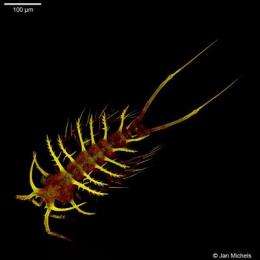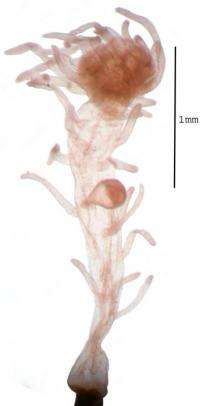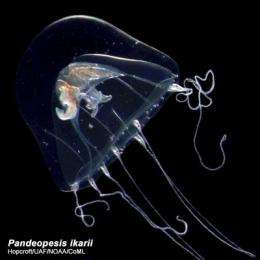Global marine life census charts vast world beneath the seas

Results of the first-ever global marine life census were unveiled Monday, revealing an unprecedented view of life beneath the waves after a decade-long trawl through the murky depths.
The Census of Marine Life estimated there are one million-plus species in the oceans, with at least three-quarters of them yet to be discovered.
The 650-million-dollar (470-million-euro) international study found more than 6,000 potentially new species, and found some species considered rare were actually common.
The research involved more than 2,700 scientists, 670 institutions, more than 540 expeditions and around 9,000 days at sea. Nearly 30 million observations of 120,000 species were made.
The census establishes a baseline against which 21st-century changes can be monitored.
New species were discovered, marine highways and rest stops mapped and changes in species abundance were documented.
"Presented is an unprecedented picture of the diversity, distribution and abundance of all kinds of marine life in Planet Ocean -- from microbes to whales, from the icy poles to the warm tropics, from the tidal near shores to the deepest dark depths," the study said.
The survey set out to find out what used to live in the oceans, what lives there now and what might live there in the future.
The census said 16,764 species of fish had so far been described, but an estimated 5,000 more were yet to be discovered.
The estimated percentage of marine species not yet described by scientists were: Europe 10 percent; South Africa 38 percent; Antarctica: 39 to 58 percent; Japan 70 percent; Mediterranean deep-sea 75 percent and Australia 80 percent.
Australian Ian Poiner, chair of the census steering committee, said the researchers "systematically defined for the first time both the known and the vast unknown, unexplored ocean".

"All surface life depends on life inside and beneath the oceans. Sea life provides half of our oxygen and a lot of our food and regulates climate. We are all citizens of the sea," he said.
"While much remains unknown, including at least 750,000 undiscovered species and their roles, we are better acquainted now with our fellow travellers and their vast habitat on this globe."
The census documented a changing marine world, richer in diversity, more connected through distribution and movements, more impacted by humans and less explored than was expected.
The researchers used sound, satellites and electronics to track migratory routes.
They got down to 10 kilometres metres (6.2 miles) below the sea in the western Pacific Ocean's Mariana Trench.
They affirmed that by weight up to 90 percent of marine life is microbial, equalling about 35 elephants for every living person.
Scientific steering committee vice-chair Myriam Sibuet of France, said: "The census enlarged the known world. Life astonished us everywhere we looked.

"In the deep sea we found luxuriant communities despite extreme conditions. The discoveries of new species and habitats both advanced science and inspired artists with their extraordinary beauty."
The census was to be formally launched in London on Monday, when more than 300 census figures were to meet in the British capital to share the results and consider their implications.
Much of the marine world remains to be explored, so vast are the seas.
The census shows where explorers have not yet looked. For more than 20 percent of the oceans' volume, the database has no records at all, and for large areas very few.
More information: Census of Marine Life: http://www.coml.org/
(c) 2010 AFP
















